It’s day 4 on Migoti Hill, 3 pm, and I am staring down the barrel of cupping bowl number 60. The hot liquor hits the roof of my mouth sending me into gustatory combat, the back of my neck is drenched but cooled from the elevation, and my eyes are starting to glass over, I am still present, still focused, and surprisingly still sharp for what will be my final cupping of the trip.
The bowl in question is a natural processed red bourbon, shit, they are all red bourbon, the sweetness of the cup overwhelms me, big and sticky the liquid coats my teeth. I am searching for the words to describe the tartness that’s hitting my tonsils - which are, by now, likely to be bent double shivering in the fetal position. I record my flavour number which is a solid 8.5 and it dawns on me that my work here is nearly over, Man, I will miss this place, I have learnt so much, and I have fallen pretty hard for East Africa…
“60 bowls in one day, 30 day-lot samples, 2 x bowls of each, 4 days straight”. “No sweat” I reply to Zephryn, Migoti’s production manager, as he takes me through the week’s agenda.
I am around 1600 masl at Migoti washing station, Burundi, the sun is setting on day one and I am sitting around the dinner table sipping on coffee cherry tonic, (ABV unknown). Mr Rutaganda (Gaston) is deep in conversation with Pontien about drying times and moisture metres as this is translated from Kinyarwanda to Kirundi and back to English. This has been a deeply satisfying trip for me, to witness the sharing of information from one producer group to another is an absolute privilege and to be sharing the table with these two teams is the only conviction I need to keep pushing for collaboration.
Rwanda and Burundi might be geographically close but they are worlds apart. A pretty checkered history between the two is gladly fading and luckily, enough time has passed to warrant this excursion. I am not 100% sure if this coming together of two nations with the same business goals is the done thing in Africa, but it is happening, it is intense, and it certainly seems to be working.
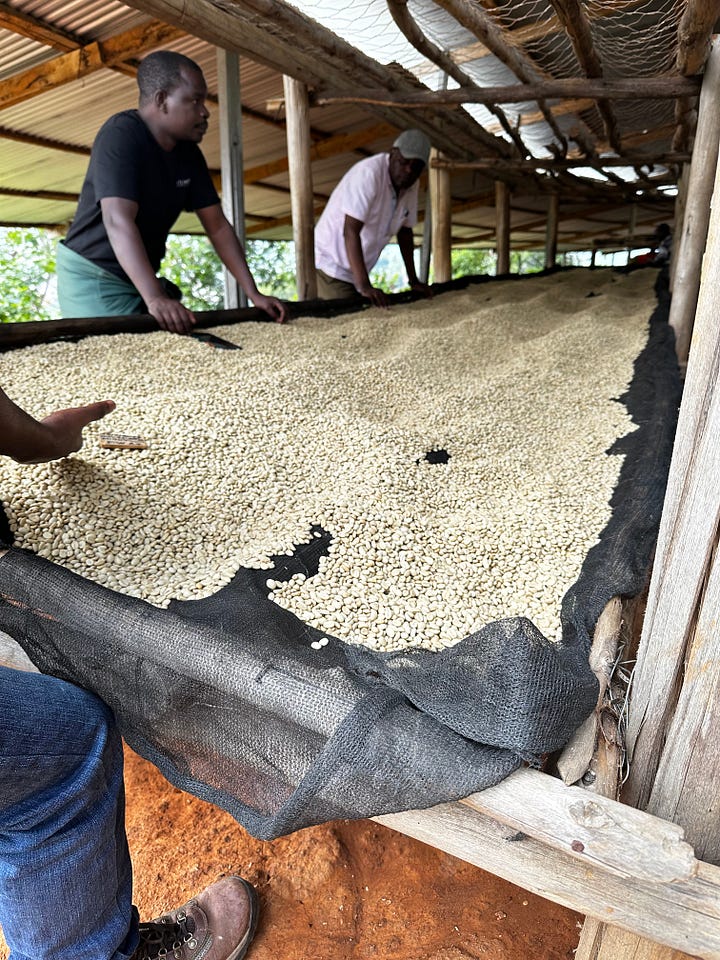
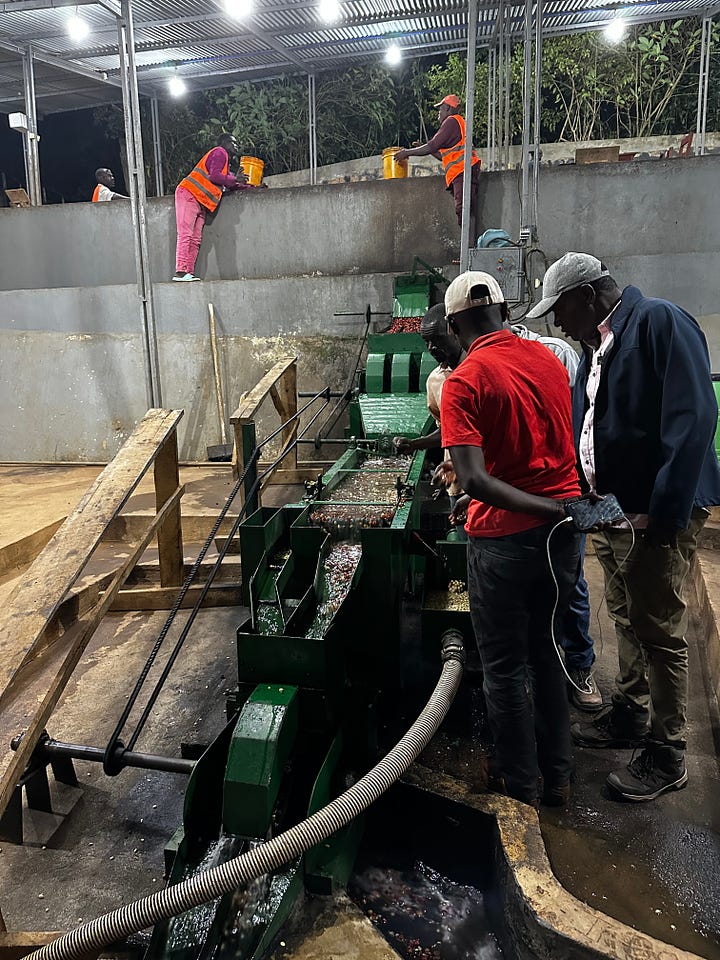
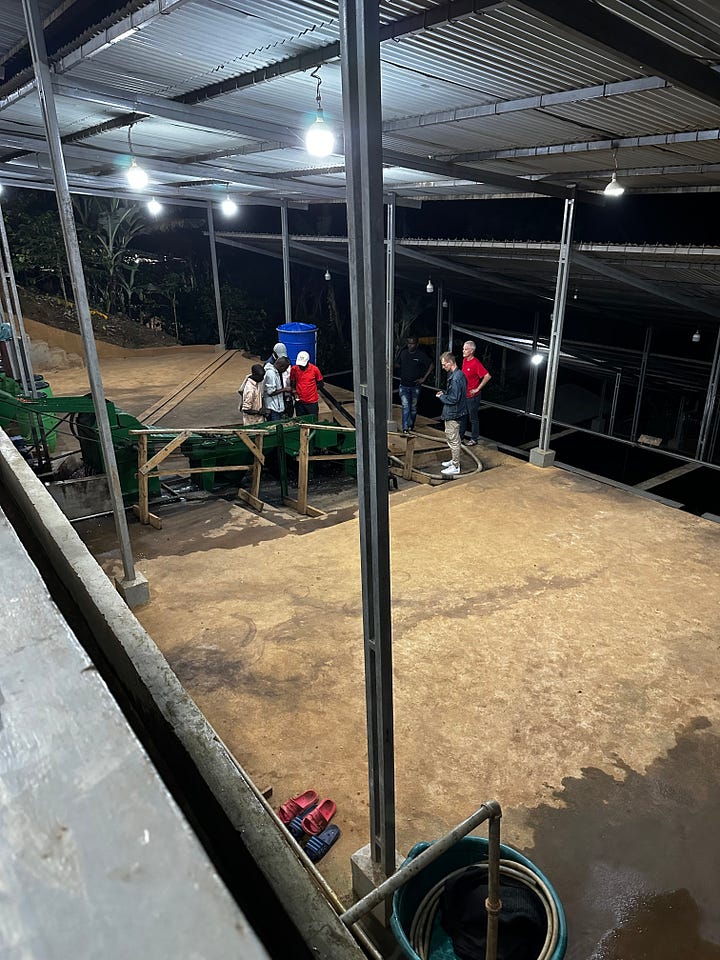
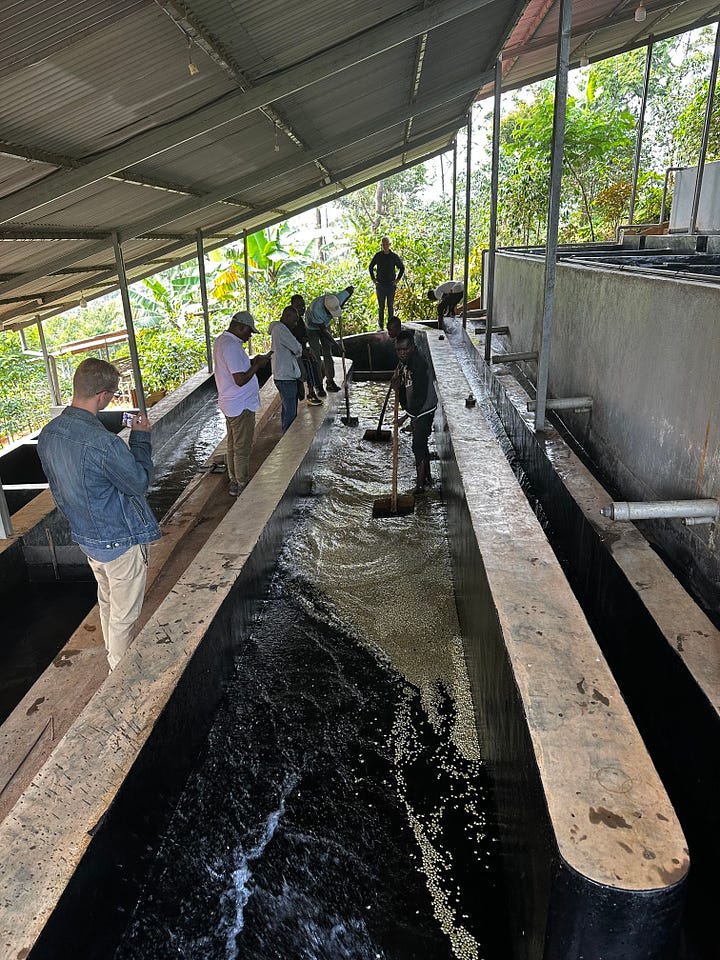
I am a mere passenger for the 2 days spent in study but as always I like to get involved and ask questions. I might not be understood first-hand but I am keen to be a part of the conversation. There are so many similarities between these two coffee-growing countries that someone has to be neutral in all of this pride.
Customs, traditions, culture, politics, and history were definitely topics of conversation between the two teams but the objective was to share their years of knowledge and expertise on quality practices. The two factories differed in obvious ways but their common goals were clear to see.
Liberation of the seed.
In the most efficient way.
Producing the best quality possible.
Whilst investing in your community.
Believe me, things were discussed…
Back to the cupping table and the question.
Am I, even, a good cupper?
Honestly, it isn’t something I give much thought to anymore. I have cupped enough coffee in my life to warrant the label cupper, or good cupper, if that is a thing?
Put it this way, if you find yourself in East Africa with the job of cupping and grading a producer’s coffee you better damn be good, or a very convincing charlatan, in-fact that would doubtfully work because believe me cupping 180 bowls of red bourbon will weed you out in a heartbeat.
There are important things to prepare for:
Calibration- take the time to cup with your team and calibrate. Myself and Zephryn ran an extensive QC training exercise during the days prior to the main event. We slipped into a good rhythm reasonably quickly but we were not scared to challenge each other’s analysis. Don’t be worried to fight your corner, everyone will get better from this, believe me…
Create the system- and stick to it. You probably won’t be surprised to find that most producers and their staff don’t hold a Q Arabica licence, not one to dig into here but I have made my feelings clear here if you want to read. What you will find though is someone who is pretty competent in cupping, knowing, and truly understanding their own country’s coffee. Your system will certainly not be the best for this occasion but make suggestions and move things in order for your comfort. Good cuppers are flexible within tolerance.
Have laser focus- Don’t go into this lightly, cupping batch after batch of the same varietal processed in the same way from a similar elevation will either make you or break you. This was an incredibly sensory-taxing experience that pushed me to discover things in the cup that will ultimately make me a better taster, this is why the score sheet moves in (.25) decimals, use them…
Be clean- everyone hates a cupper that isn’t willing to clear up their mess. Don’t be that person. Also, get involved in sample prep you lazy sod…
Keep learning- I am not the best cupper nor will I ever be but, I am willing to have conviction in my numbers and defend them, it is too easy to be swayed by the dominant force. Calculate your numbers and present them. You can always discuss after the fact.
Know your potato- just GOOGLE, East Africa - Potato - Coffee. It’s not good but there are increasing screening systems being implemented to limit this and the coffee is definitely benefiting from this.
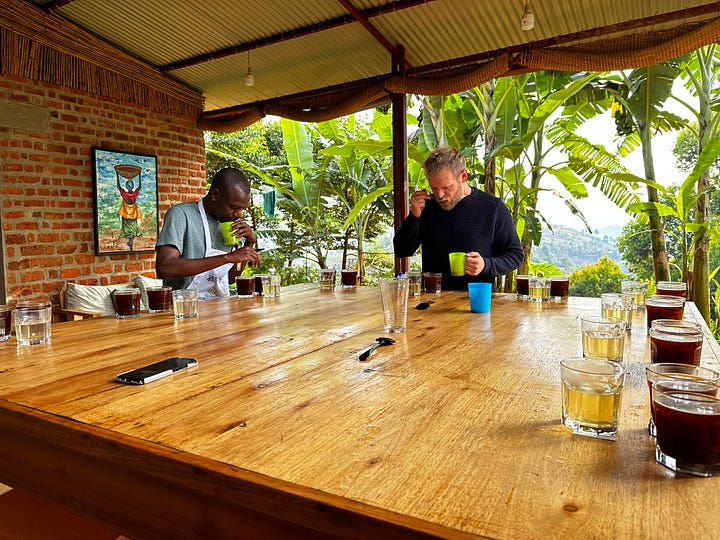
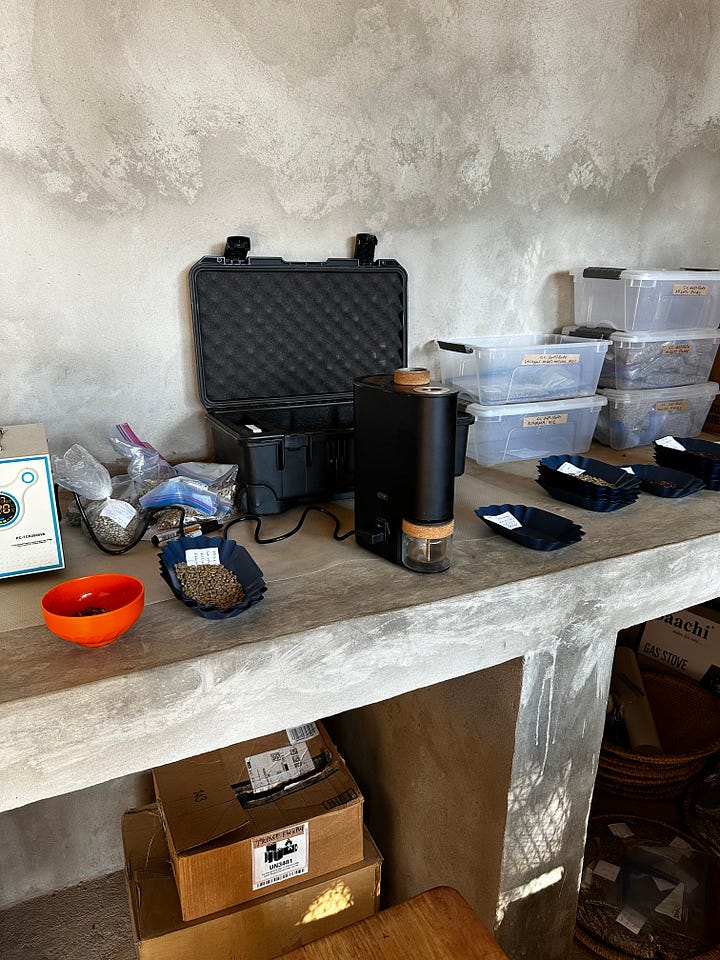
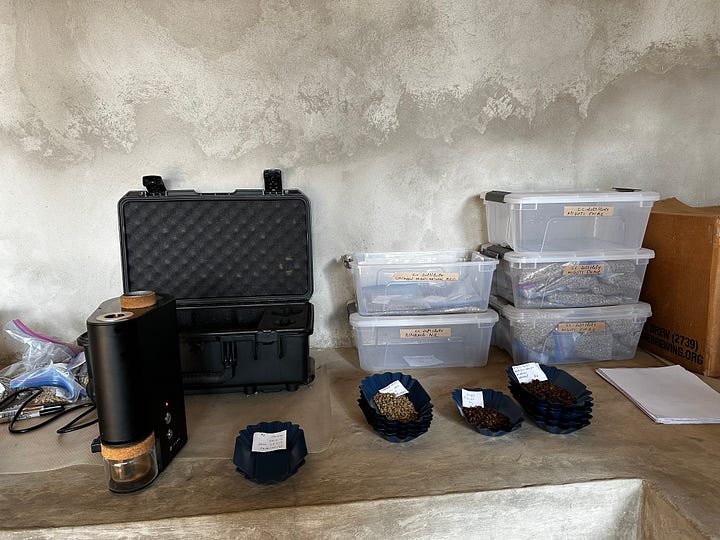
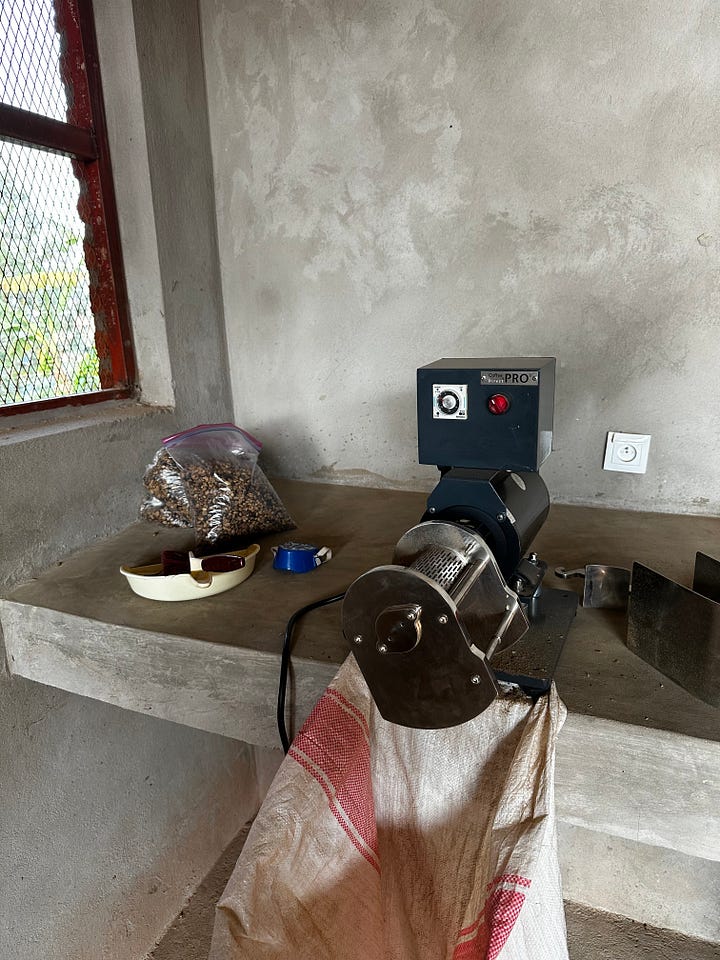
Cupping is not a choice.
The feedback loop from production to cupping is critical if we want to analyse quality and make improvements. Imagine selling a product, that you sell based on quality, knowing that the quality will be the determining factor on how much your product was worth. Would you let the buyer be the only one responsible for analysing your quality?
Absolutely not!!!
Unfortunately, this scenario is still the case for many coffee producers. This needs to change.
So to reflect on the question, am I, even, a good cupper?
Yes, I am.
But that is the problem, I am also the buyer…
Think about it.
Burts x





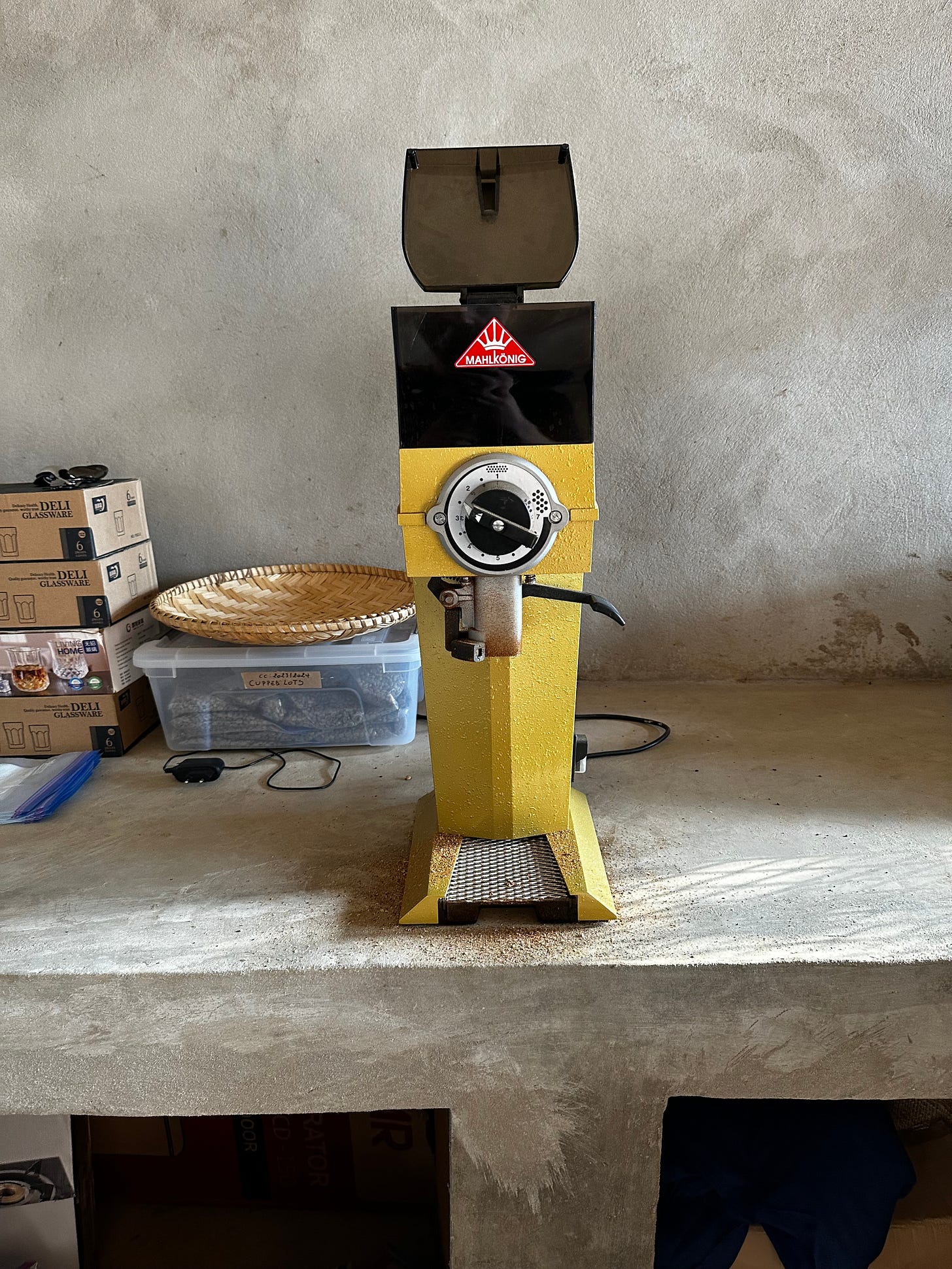
As always, a fantastic read. Now, when can I get my hands on some of this delicious coffee???